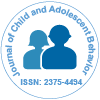开放获取期刊获得更多读者和引用
700 种期刊 和 15,000,000 名读者 每份期刊 获得 25,000 多名读者
索引于
- 哥白尼索引
- 谷歌学术
- 打开 J 门
- 学术钥匙
- 安全点亮
- 参考搜索
- 哈姆达大学
- 亚利桑那州EBSCO
- OCLC-世界猫
- 普布隆斯
- 日内瓦医学教育与研究基金会
- 欧洲酒吧
- ICMJE
有用的链接
开放获取期刊
分享此页面
抽象的
A Brief Note on Psychosis in the Children
James Walker
Despite the fact that the Diagnostic and Statistical Manual of Mental Disorders, Fourth Edition, Text Revision (DSM-IV-TR) provides identical symptoms and definitions for children, adolescents, and adults, the diagnosis of childhood psychosis raises a number of unresolved issues. When distinguishing between childhood-onset schizophrenia (COS) (12 years), bipolar affective disorder, major depressive disorder, and even obsessivecompulsive disorder and attention-deficit/hyperactivity disorder), fantasy lives of children, as well as issues with developing language and cognition (including retardation), all impair diagnostic accuracy: For problems that cannot be solved, the all-encompassing classification known as psychosis not otherwise specified (PNOS) is always available. Neurocognitive issues are typical if nonpathognomonic features. There are a variety of screening tools and specialized versions of semistructured diagnostic interviews. Although smooth-pursuit eye-tracking movements may serve as a genetic marker for COS, the etiologies are more likely to be oligogenetic than to be associated with a single gene. Neuroimages and specific biological markers have not been identified. As a result, psychoses might be a sign of a larger pattern of brain dysfunction. Due to a lack of controlled data for children under the age of 18, drug treatments are largely based on adult literature. Psychosocial treatments and psychotherapy for childhood psychosis still lack rigorous research.

 English
English  Spanish
Spanish  Russian
Russian  German
German  French
French  Japanese
Japanese  Portuguese
Portuguese  Hindi
Hindi